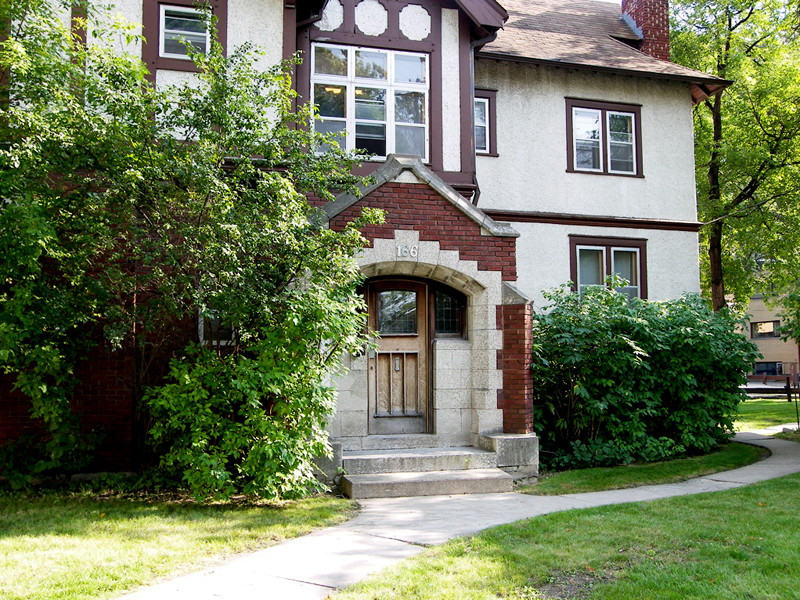Heritage building demolition stirs up Osborne residents
City broke its own laws when it approved demolition, opponents say
Plans to demolish a historic building in Osborne Village have many residents and Winnipeg professionals worried about the priorities of city hall.
City council voted on June 24 to revoke the heritage status of Dennistown House, opening it up for demolition. Dennistown House is a Roslyn Road building, constructed in 1908, that showcases the architectural style of prominent builder John Atchison. The building will be replaced by a 12-storey, 74-unit condominium complex and a row of townhouse units.
“Dennistown was listed as a heritage building because it is architecturally significant,” said Jennifer Lukovich, a member of the Osborne Village Neighbourhood Association, a group of concerned residents looking to save the house. “This [decision] renders as meaningless the heritage designation… This building was not de-listed for any reason other than profit.”
The city’s decision was motivated by the recommendation of the Property, Planning and Development Committee (PPD). The PPD consulted many in the heritage community regarding the proposed demolition, including the Historical Buildings Committee (HBC).
“The HBC opposed the demolition and there were several prominent individuals from the heritage community that appeared as registered delegates in front of the PPD,” said Cindy Tugwell, executive director of Heritage Winnipeg.
The PPD subverted their own department’s bylaws and regulations when recommending the demolition of Dennistown House, she said.
In 2006 the PPD adopted the Osborne Village Neighborhood Plan, which stated that demolition should only be considered when historical buildings are determined to be structurally unsound beyond repair and economically unviable. The building is in good repair and houses several tenants.
“Dennistown House is an example of the city’s unwillingness to enforce heritage bylaws in the face of profitable development,” said Robert Galston, a Winnipeg writer and urban development blogger. “Unless there is some political will to defend these bylaws they will just be overridden when the chance comes up.”
Michael Evans, president of Sunstone Resort Communities, the developer of what will be called Dennistown Flats, is confident that the development will benefit the community.
“We are only now starting to evolve in terms of the design of the complex,” he said.
Evans said any major criticisms are too speculative at this stage in the process.
“We will appeal to a different strata of the community, bringing patrons to local businesses and have people using other forms of transportation, which is sustainable.”
While some are concerned about the legal ramifications of the proposed development, members of the Osborne Village Neighbourhood Association are also grieving the possible loss of green space and the disruption in Roslyn’s aesthetic. The association estimates that eight to 10 mature elm trees will be cut down for the development. They also worry traffic congestion, often a problem along Osborne during morning and afternoon rush hours, will only increase with the inflow of possibly 90 more vehicles associated with the complex.
An independent report from MMM Group, a national engineering company, said the development would not measurably effect current traffic congestion in the neighborhood, Evans said.
Published in Volume 64, Number 2 of The Uniter (September 10, 2009)








